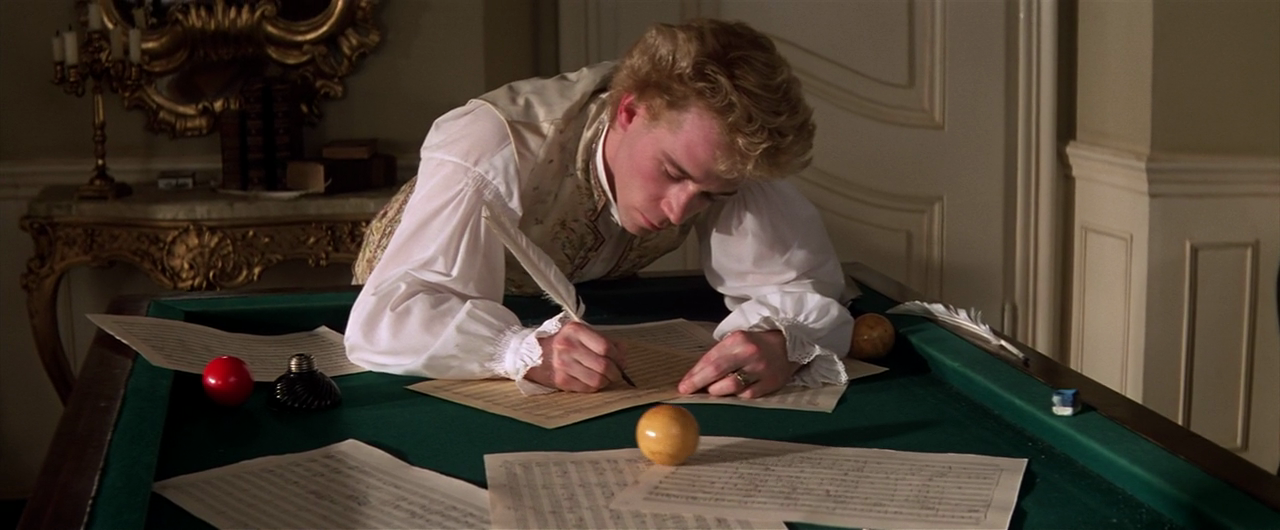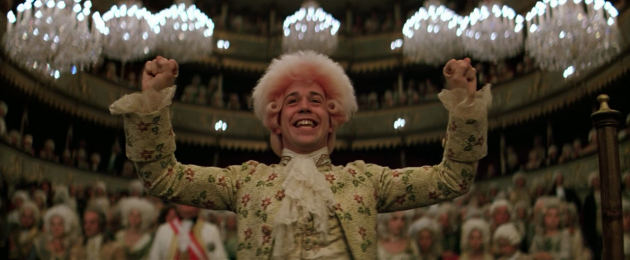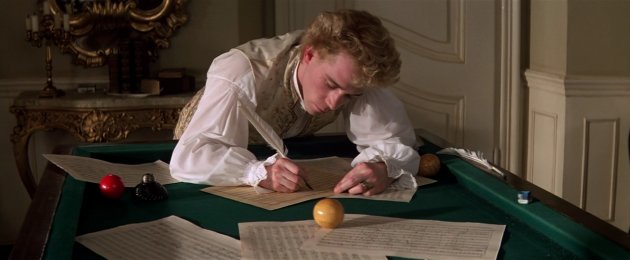Warning: This article contains obscene quantities of music, because this month’s composer wrote far too many masterpieces. Trying to condense his work to a few greatest hits would be like using a single track to summarise the entire career of a prolific band. In other words, it would be a crime against music. So please, don’t attempt to tackle everything here in one go, because your ears will break. This is an introduction, but hopefully it’s also comprehensive enough to merit more than one visit. I’ve made a convenient playlist of all the pieces mentioned, which you can find here on YouTube or here on Spotify for more comfortable browsing. And with that out of the way, let’s start…
Don’t know the difference between an Andantino and an Adagietto? Can’t distinguish between the Borodin Quartet and the Borodin Quartet? Confuse Schubert with Schumann? Baffled by Viola Jokes? Have no idea what a conductor actually does? Slightly irritated by this long list of gently patronising rhetorical questions? Then look no further, as The Classical is here to dispel the confusion and sweep away the pomposity frequently (but erroneously) associated with classical music. As I hopefully made clear in last month’s article, although this music might often have been produced at the behest of aristocrats and enjoyed by the rich, it is in fact one of the most universal of all art forms, and readily available to anyone who is interested. Whether it’s virtuosity, drama, pattern, emotion or beauty that you enjoy, classical music can provide them all in abundance. Oh, and there’s also the enjoyable sensation of total and utter smugness that comes with being able to answer questions on certain quiz shows and having an ever-more eclectic last.fm profile. This month, I’m going to be attempting an introduction to one of the most prolific, significant and perennially adorable composers ever to have donned a powdered periwig – Wolfgang Amadeus Mozart – or to give him his full title, Wolfgangus Johannes Chrysostomus Theophilus Peter George St. John le Baptiste de la Salle Mozart:
#2: Rock Me Amadeus
OK, so maybe that isn’t exactly what Mozart looked like, and maybe it’s a bit more 1984 than 1784, but as director Miloš Forman has pointed out, Mozart looks different in every one of the portraits of him which survives, which led him to reason that in reality Wolfy must have been a rather unprepossessing, non-descript figure. And while Amadeus might be a travesty of history in terms of its main story (there was no real rivalry between Salieri and Mozart – the idea was largely cooked up by Pushkin years later and then turned into an opera by Rimsky-Korsakov) it is surprisingly accurate in almost every other respect, and is in fact a brilliant introduction to almost every aspect of his musical career. To give just one example, Mozart really did have the scatological sense of humour shown in the film – and this didn’t just manifest itself in his private life, he actually wrote a vocal piece entitled “Leck mich im Arsch” (use your imagination on that one) and wrote instructions to the soloist in the score of one of his horn concertos which included: “pain in the balls … but do play at least one note, you prick!”. Given that he was also known as a keen dancer, billiards player and practical joker, I personally don’t have trouble believing in Tom Hulce’s brilliant portrayal of the composer. Mozart’s good-humoured nature shines through in his music, and like the work of his friend and some-time mentor Haydn, gives the lie to the idea that classical music is always deeply serious.
Mozart’s name is almost synonymous with genius and prodigious talent – a cursory glance at YouTube quickly turns up any number of fawning journalists gasping in awe as the latest seven year old child plonks out the Mario theme on a casiotone keyboard, and is swiftly hailed as “the next Mozart.” But contrary to the mythology which sprang up after his untimely death in 1791, Mozart was not born a genius, nor was he simply transcribing music directly from the mouth of God. Such ideas, along with the notion that he never made any sketches, but simply wrote complete works in a single draft, were propagated by his widow Constanze, who was an excellent singer in her own right, but elevated her husband to saint-like status in the early decades of the nineteenth century. Instead, Mozart’s talent developed consistently over the course of his career, reaching a peak in his last years. His music was the result of hard work, not luck. He was also nurtured by his father Leopold, one of history’s greatest pushy parents, and his elder sister Nannerl, the original wunderkind of the Mozart family. Like many more recent showbiz children, Mozart spent a lot of his childhood on the road, learning the family trade and performing blindfolded for the crowned heads of Europe. This experience gave him the ability to produce crowd-pleasing, but nonetheless rigorous works, and fostered his remarkable abilities in improvisation around a theme which served him well later in life, composing on the spot for enraptured audiences, or sometimes just because a piece hadn’t been finished in time. Mozart also continued to travel in search of sympathetic audiences into his adult life, escaping provincial Salzburg and moving to imperial Vienna during his twenties, as well as finding success in Prague.
It’s also worth keeping in mind that before the Romantics showed up and started renegotiating their status and conditions of patronage, musicians were generally classed as servants, and relied for the most part on permanent positions in the courts of the wealthy and powerful. Mozart’s talent and popularity, however, allowed him a certain degree of creative freedom, but never a secure income. Musicians also had no means of claiming royalties on their compositions, receiving only one-off payments from publishers who were often engaged in a desperate free-for-all to get their editions out first and make a quick profit before the market was saturated by pirated copies of the latest popular tune. Mozart, much like independent artists today in an increasingly uncertain marketplace, had to supplement his income through live performances. Although extremely popular, his work never achieved the overwhelming acceptance enjoyed by figures like Haydn. Despite the easy-listening status it now enjoys, Mozart’s music was seen in his own time as being unusually complex. In fact, the last symphony he completed was nicknamed the “Jupiter,” not because of any celestial connotations, but because audiences of the time felt that only the gods could understand it. However, unlike many of his contemporaries, who on the whole produced pleasing, but conventional music, Mozart’s investment in more progressive ideas paid off in the long term, providing a wellspring of inspiration to countless other composers and enjoying a level of popularity which today is rivalled only by Bach. Saying much more about Mozart’s life would be superfluous, so on to the music itself.
Works
“For one of your works a poet could only write one poem; while to a Mozart work he could write three or four analogous ones” – Karl Holz, writing to Beethoven in one of his conversation books, marking the beginning of a tedious debate about who was the better composer.
Having started composing from his early childhood, Mozart managed to produce over 600 works during his short life and mastered every genre with apparent ease. Whereas Beethoven was not averse to churning out pot-boilers like the bombastic “Battle Symphony,” and was sometimes a little bit intense or rough around the edges, Mozart’s works almost always exhibit an incredible degree of finish – resolved, polished and perfect in every detail, with little left to chance. Even when faced with commissions for instruments he hated, Mozart always displayed the utmost professionalism, working conscientiously to produce whatever was needed. This diligence also extended to orchestras, as instrumentalists became increasingly well-organised during his lifetime, and Mozart was constantly pushing his musicians in order to properly realise what he intended for the music, without stretching them to breaking point, as Beethoven would later do. Mozart’s work displays a consummate craftsmanship and represents the zenith of classical music in its strictest sense – that which was written after the baroque, but before romanticism. Classicism was certainly more restrained than later eras – it still adhered strictly to sonata form and had a kind of horror vacui which resulted in a very full, busy sound, but it was by no means inexpressive. Listening to Mozart is like travelling back to witness the unbridled optimism of the Enlightenment and the frivolity and frills of the rococo.
While never inventing any new forms as Haydn and others had done before him, Mozart concentrated instead on expanding, and often perfecting, every musical form then available, as well as using unusual instrumentation. The emotional range of his work is perhaps not as wide as Beethoven’s, but was certainly more subtle and less iconoclastic – from dramatic minor key symphonies inspired by Haydn’s earlier contributions to the proto-Romantic movement known as “Sturm und Drang,” to refined and stylish concertos, he mastered everything. While generally light and graceful, his output was rarely insubstantial or simplistic. He was entirely capable of creating dark and turbulent pieces, but also valued entertainment and virtuosity, intimacy and tenderness. Mozart was also a phenomenally gifted writer of melodies – his phrasing and style are instantly likeable and recognisable, and his insistent tunes have a way of lodging in the mind that can make Beethoven’s themes seem overwrought. His writing is sometimes lyrical, and at other times possesses an ethereal, almost transcendental beauty, but is always hugely satisfying.
While Beethoven struggled to complete one opera, Mozart wrote more than twenty. In fact, the sheer volume of his work in all areas in nothing short of astounding – 23 string quartets, 27 concertos for piano alone, 41 symphonies, 17 masses, 36 violin sonatas, and so on. In purely numerical terms, the classical era beats the romantics hands down. However, these figures also show the folly of comparing giants of different eras. The relative achievements and different contexts of composers like Mozart and Beethoven makes any debate about superiority irrelevant – after all, Beethoven himself felt inferior to his great musical forerunner, even late on in life. Mozart’s penchant for improvisation also left room for dialogue with later composers, as most of his concertos allow the soloist to improvise a whole section of the music, in a manner which is perhaps more familiar to modern audiences via jazz, or even guitar solos.
With such a wealth of material on offer, the only question remaining is where to start. Curiously, one of the best places to begin exploring is at the very end, with a work which Mozart died before completing. This is the famous Requiem – an almost unbearably poignant musical setting of a Latin text used in Catholic services to commemorate the dead. The only other composer who could ever compete with Mozart in this field was Verdi, whose own Requiem is a work, which alongside Car Orff’s “Carmina Burana” and Prokofiev’s “Romeo and Juliet,” has become a favourite of lazy television researchers looking for evil-sounding music. Mozart, fortunately, has avoided this kind of pigeonholing.
Here’s a handy playlist for the entire Requiem, because it would be a crime just to give you extracts.
Listen out especially for the start of the “Dies Irae” – the text of which comes from a thirteenth century hymn about judgment and the end of the world – hence the ever-so-slightly dramatic tone. From the same section comes the mournful and achingly beautiful “Lacrimosa,” an English translation of which also features in Regina Spektor’s song of the same name. “The Kyrie,” “Confutatis” and “Rex Tremendae” sections are also particular highlights. For those of who don’t happen to speak Latin, this translation is also helpful. You may also notice that the piece is in D minor, the saddest of all keys.
If you’d rather start off with something a bit less morbid, but equally accessible, then the concertos are an excellent place to begin. I’ll save you the trouble of dredging through all 42 of them by picking out a few of the best. The clarinet concerto is an enduring favourite, and the last concerto Mozart wrote. The clarinet itself was only a relatively recent invention at the time of composition, and Mozart explored the potential of the instrument, exploiting its autumnal timbre and ability to produce low, burbling rhythms. The first movement, with its famous opening, shifts back and forth between fluttering orchestral parts and the slightly melancholy clarinet:
Clarinet Concerto, 1st Movement – Allegro:
The second, and most famous movement, is a sumptuous and luxuriously paced combination of rich orchestral textures and sinuous clarinet lines:
Clarinet Concerto, 2nd Movement – Adagio:
Clarinet Concerto, 3rd Movement – Rondo, Allegro:



